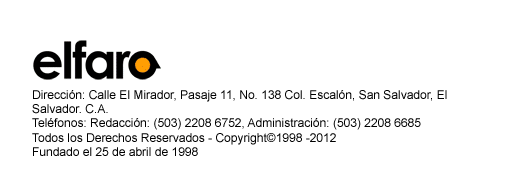SECURING US BORDERS AGAINST SALVADORAN GANGS: THE INITIAL SUCCESS OF INA 212(a)(3)(A)(ii)
Publicado el 24 de Mayo de 2011
id: 45873
date: 11/22/2005 19:41
refid: 05SANSALVADOR3283
origin: Embassy San Salvador
classification: UNCLASSIFIED
destination: 05SANSALVADOR2718|05SANSALVADOR2942|05STATE109415
header:
This record is a partial extract of the original cable. The full text of the original cable is not available.
----------------- header ends ----------------
UNCLAS SECTION 01 OF 02 SAN SALVADOR 003283
SIPDIS
DEPT FOR CA/FPP, CA/VO/I, WHA/CEN for Paul Degler
E.O. 12958: N/A
TAGS: CVIS, KFRD, PREL, SNAR, PTER, KCRM, SOCI, KHLS, PINS, ES, GANGS
SUBJECT: SECURING US BORDERS AGAINST SALVADORAN GANGS:
THE INITIAL SUCCESS OF INA 212(a)(3)(A)(ii)
REF: A) SAN SALVADOR 2942, B) SAN SALVADOR 2718,
C) STATE 109415
1. SUMMARY: Travel to the United States is now more
difficult for members of Salvadoran-based gangs. Since June
2005, when the Departments of State and Homeland Security
agreed that INA 212(a)(3)(A)(ii) renders members of
Salvadoran street gangs ineligible for a visa, Post
successfully used this finding to prevent gang members from
legally immigrating to the United States, facilitated the
arrest and deportation of a gang member illegally present in
the U.S., and expedited the deportation of another gang
member attempting to illegally enter the United States.
Responsible use of the more explicitly gang-related
ineligibility combined with increased cooperation between
the United States and other countries affected by gang
violence has the potential to further enhance U.S. border
security. End Summary.
-----------------
Focusing on Gangs
-----------------
2. Since June 2005, when INA section 212(a)(3)(A)(ii) began
to apply to active members of organized Salvadoran street
gangs, Post has entered circa 5,000 suspected gang members
into CLASS (P hits). Much of Post's information came from
lists provided by El Salvador's National Civil Police (PNC)
and the FBI. The Department's Consular Systems Division
(CA/EX/CSD) assistance was critical to Post's ability to
enter quickly this volume of data. Further, Post is aware
that DHS in the U.S. has increased CLASS entries of MS-13
members in the US, which contributes to the number of gang-
related entries in CLASS and provides opportunity for
further findings of ineligibility of gang members.
3. Speedy entry of the names proved important as the INA
ineligibility enabled Post to deny an immigrant visa to one
applicant and to work with DHS to affect the deportation of
another IV applicant who entered the U.S. illegally. (REFTEL
B) Post hopes that these entries - whether done by Consular
or by DHS in the US - will result in additional findings of
ineligibility not just in El Salvador, but in other posts
and at POEs.
--------------------------------------------- -----
The Most Recent Success -- Detection at the Border
--------------------------------------------- -----
4. In October, a DHS officer stopped an undocumented alien
attempting to illegally enter the U.S. near Brownsville,
Texas. During routine namechecks, the DHS agent discovered
the Post-entered P3A2 hit. Not knowing the meaning of the
hit, the DHS officer contacted Post for clarification and
more information. Based on this call, Post obtained
additional case information from El Salvador's Anti-Gang
Task Force and forwarded the subject's previous criminal
history for DHS to present to the immigration judge hearing
the subject's case. Instead of releasing the undocumented
alien pending an immigration court hearing, because of this
information the judge ordered the subject detained until
deported. Post expects this suspect gang member to be back
in El Salvador within a few days.
5. Post believes additional technologies can improve upon
current success. One technology already available at our
fingertips is biometrics.
--------------------------------------------- -----------
Why Use Biometrics to Tackle Salvadoran Gang Travel?
--------------------------------------------- -----------
6. El Salvador employs a USAID-sponsored biometric
technology as part of the Salvadoran national identity card.
This ID card, issued to all Salvadorans 18 and older,
includes biometrics which are compatible with IDENT
software. Because of this link, Post is actively pursuing
methods to increase the ability of the GOES to take the
biometric prints of gang members and share this information
with U.S. authorities. If cooperation expands, neither visa
applicants nor detainees will be able to hide their gang
associations behind false identities. Consular officers and
law enforcement officials alike will gain a reliable
additional tool for combating gangs and protecting U.S.
borders. Our ability to track and combat the international
movement of Salvadoran gang members will assume greater
importance if, as some observers anticipate, the gangs
attempt to expand their sources of revenue and influence
through transnational alien smuggling and narcotics
trafficking.
7. To test the compatibility of GOES and USG software, Post
recently facilitated a test enabling electronic fingerprints
and other information about gang members to be rapidly
shared among the PNC, El Salvador's National Civil Registry,
the FBI, DHS's IDENT data base, and consular data bases.
This test demonstrated that the systematic sharing of gang-
related data can improve the positive identification of gang
members and help prevent them from penetrating U.S. borders.
(REFTEL A)
-----------
What Next?
----------
8. In our experience, the expansion of this ineligibility
to active Salvadoran gang members is a useful tool to
protect our borders. But how do we make the best use of it?
A few possible ideas:
In El Salvador
-- Further assist the PNC and the Salvadoran National Civil
Registry to increase their capability to take electronic
fingerprints of gang members.
-- Facilitate closer cooperation between the two Salvadoran
agencies by outlining the methods through which U.S.
national intelligence organizations, federal law enforcement
agencies and local government authorities achieved more
effective communications after September 11.
-- Establish procedures for the systematic or regularized
sharing of gang-related information between U.S. and
Salvadoran government entities.
Beyond El Salvador
-- Joint training for consular and DHS officers in the
various aspects of gang identification and the application
of INA ineligibilities to strengthen the ability of the two
organizations to work together more effectively.
-- State Department, Consular Affairs and/or CA/FPP training
in the field to increase regional knowledge of gangs.
-- Conduct an anti-gang conference in WHA/CEN area to
increase cooperation and info exchange, and to streamline
use of the 212 ineligibility among WHA/CEN consular
sections.
--------
COMMENTS
--------
9. Post actively uses this new interpretation of Section
212(a)(3)(A)(ii) to fulfill our Mission goals and secure
U.S. borders. Other posts may find the tool equally
helpful, and Post welcomes Department or other Embassy
comments or questions which may help us collectively take
best advantage of this ineligibility throughout the region.
Barclay
=======================CABLE ENDS============================




